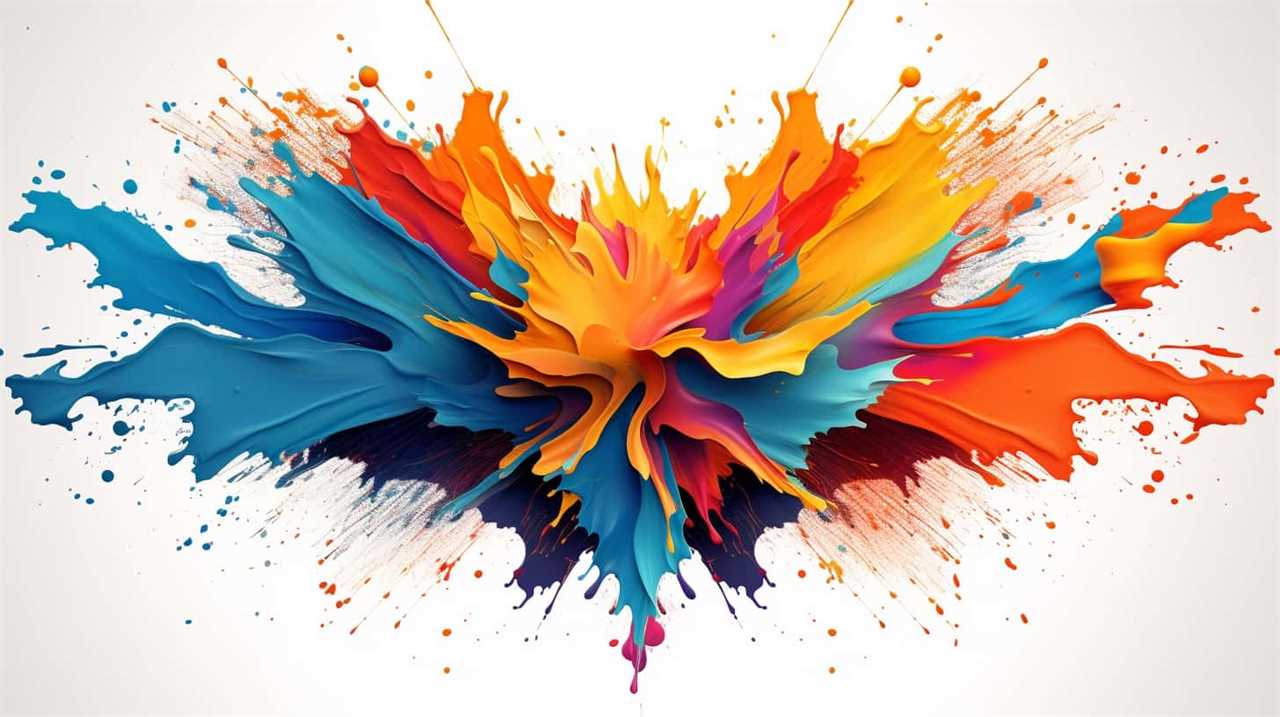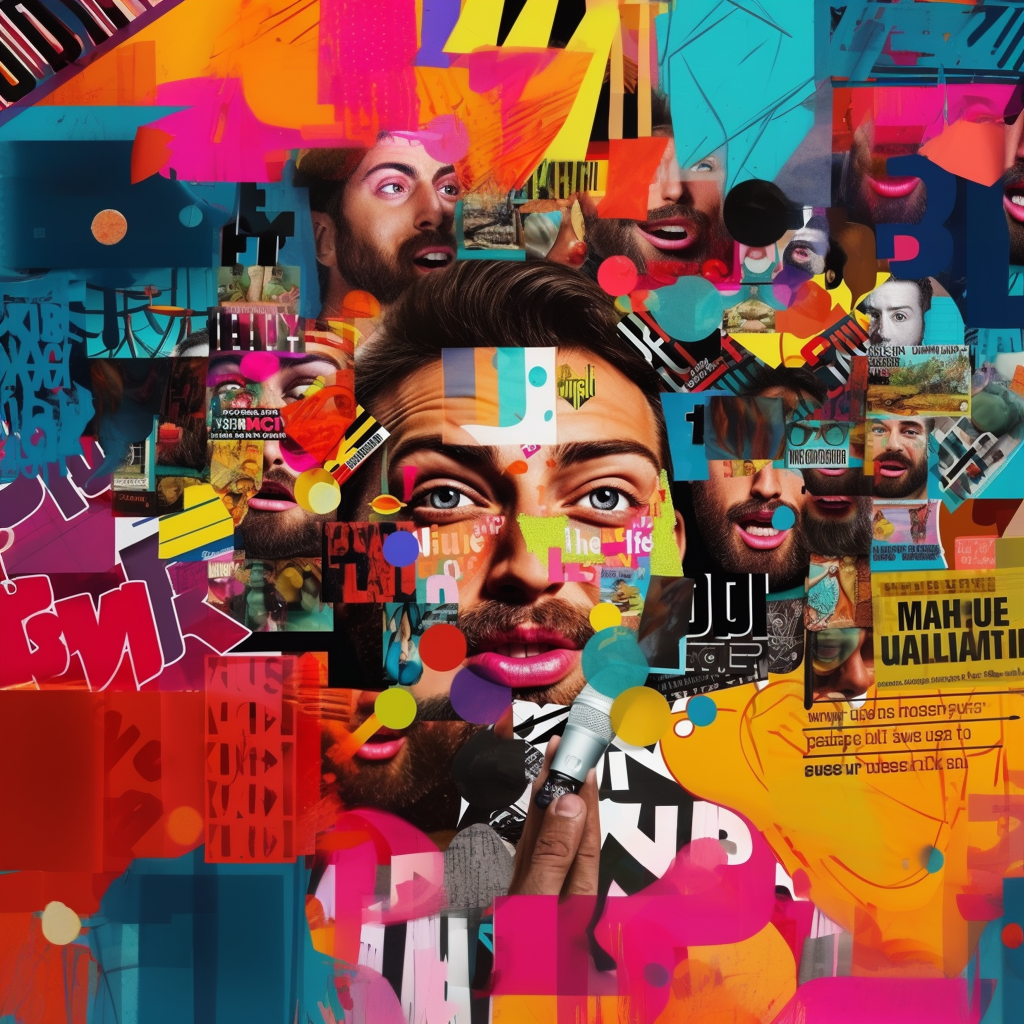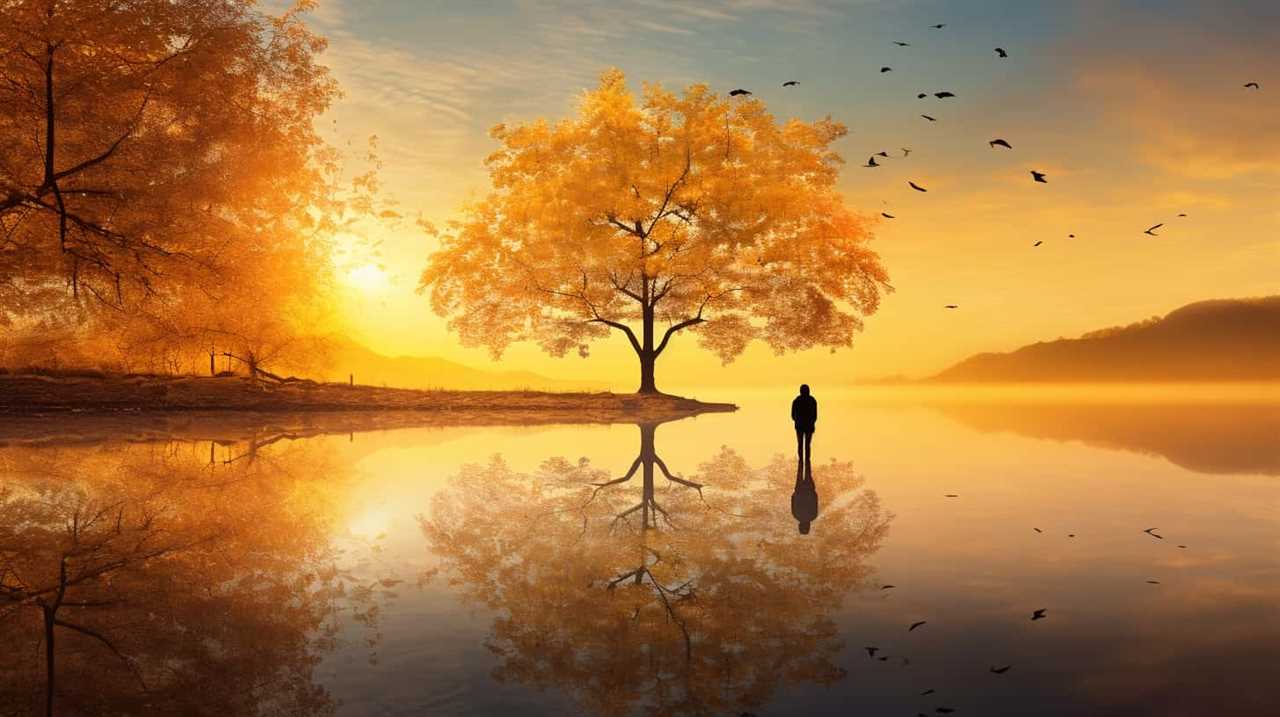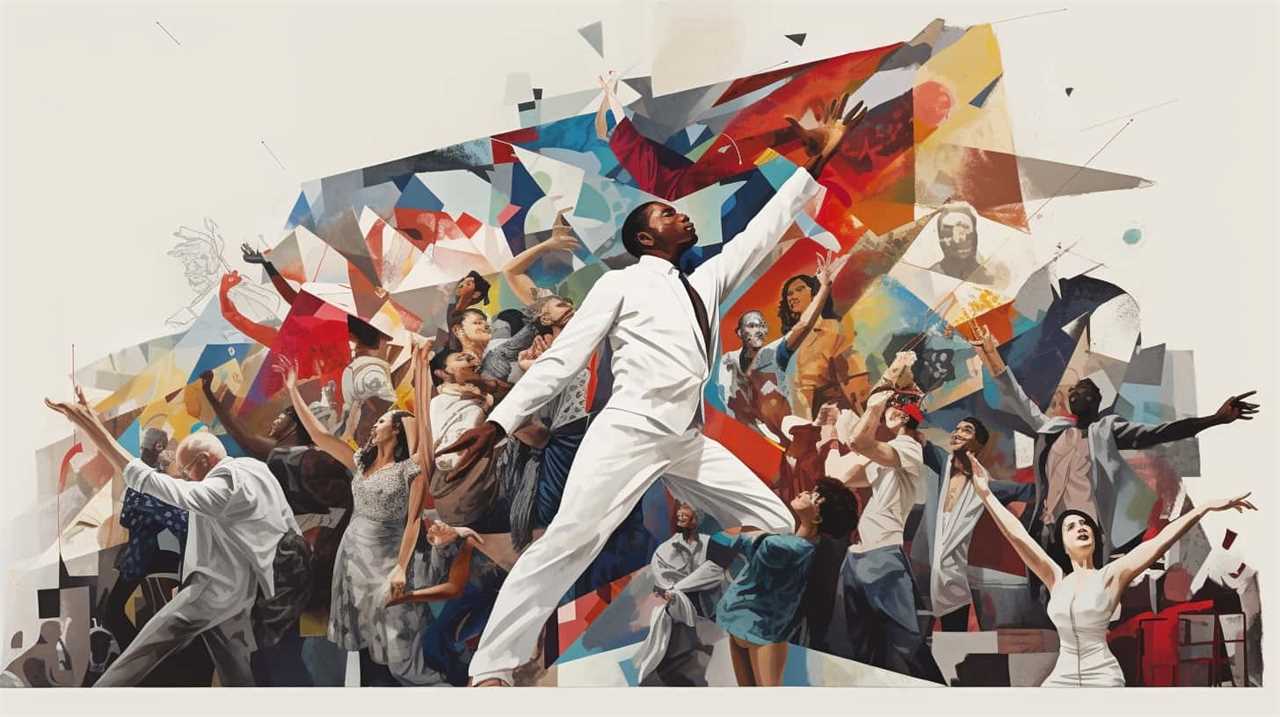Do you ever find yourself feeling stressed, anxious, or uncertain about where to go next?
What if I told you that there is a simple and innovative way to enhance your overall wellbeing?
Coincidentally, artistic expression can be the key to unlocking a happier and more fulfilled life.
By engaging in various art forms, you can boost your mood, reduce stress, and foster self-expression.

Not only that, but artistic expression also enhances your emotional intelligence, improves cognitive function, and expands your perspective and empathy.
It even facilitates problem-solving and decision-making, providing you with a sense of purpose and fulfillment.
Embrace the power of artistic expression and discover the transformative effects it can have on your wellbeing.
Key Takeaways
- Artistic expression boosts mood and happiness, reduces stress and anxiety, fosters self-expression and identity, and enhances emotional intelligence.
- Artistic expression enhances cognitive function and perspective, improves cognitive function, aids in memory, and promotes creative problem-solving.
- Artistic expression promotes self-reflection and personal growth by fostering self-awareness, emotional exploration, self-reflection, introspection, and providing a sense of purpose and fulfillment.
- Artistic expression strengthens communication and connection, sparks creativity and innovation, drives inventive problem-solving, and expands perspective and empathy.
Boosts Mood and Happiness
Artistic expression can boost your mood and happiness. Engaging in creative activities allows you to explore your inner world, express your emotions, and tap into your imagination. This process has a profound impact on your mental health, improving your overall well-being.
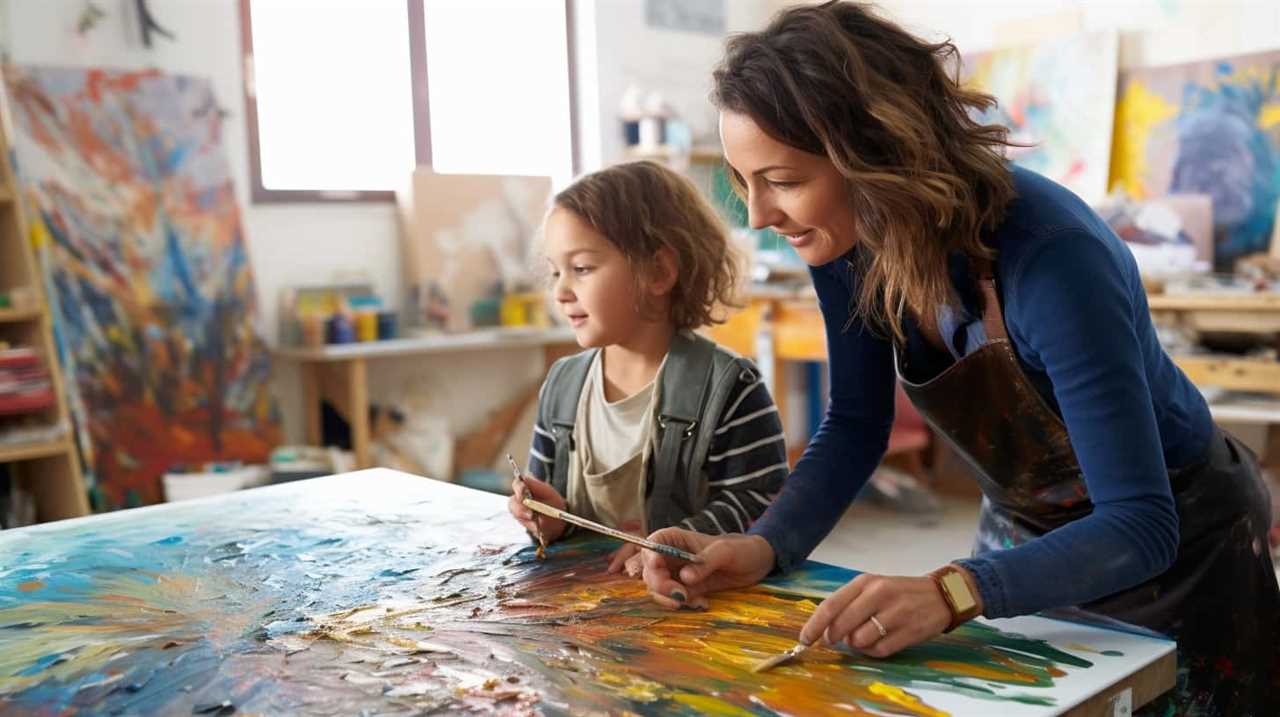
When you immerse yourself in the world of art, whether it be through painting, writing, or playing an instrument, you create a space where you can freely express yourself without judgment. This self-expression acts as a form of therapy, allowing you to release pent-up emotions and find solace in the act of creation.
Engaging in artistic expression also stimulates the release of dopamine, a neurotransmitter associated with pleasure and reward. This boost in dopamine not only enhances your mood but also increases your motivation and sense of accomplishment. The satisfaction you feel when completing a piece of art or achieving a creative goal contributes to a sense of fulfillment and happiness.
Moreover, artistic expression encourages mindfulness and self-awareness. As you focus on creating, you become fully present in the moment, allowing your mind to rest and rejuvenate. This meditative state promotes relaxation, reduces stress, and improves mental clarity.
Reduces Stress and Anxiety
Engaging in artistic expression can help reduce stress and anxiety by providing a calming and therapeutic outlet for self-expression. In today’s fast-paced world, stress and anxiety have become common companions. The constant demands and pressures can take a toll on your mental and emotional well-being. That’s where art comes in. It offers a refuge, a space where you can escape from the chaos and find solace.
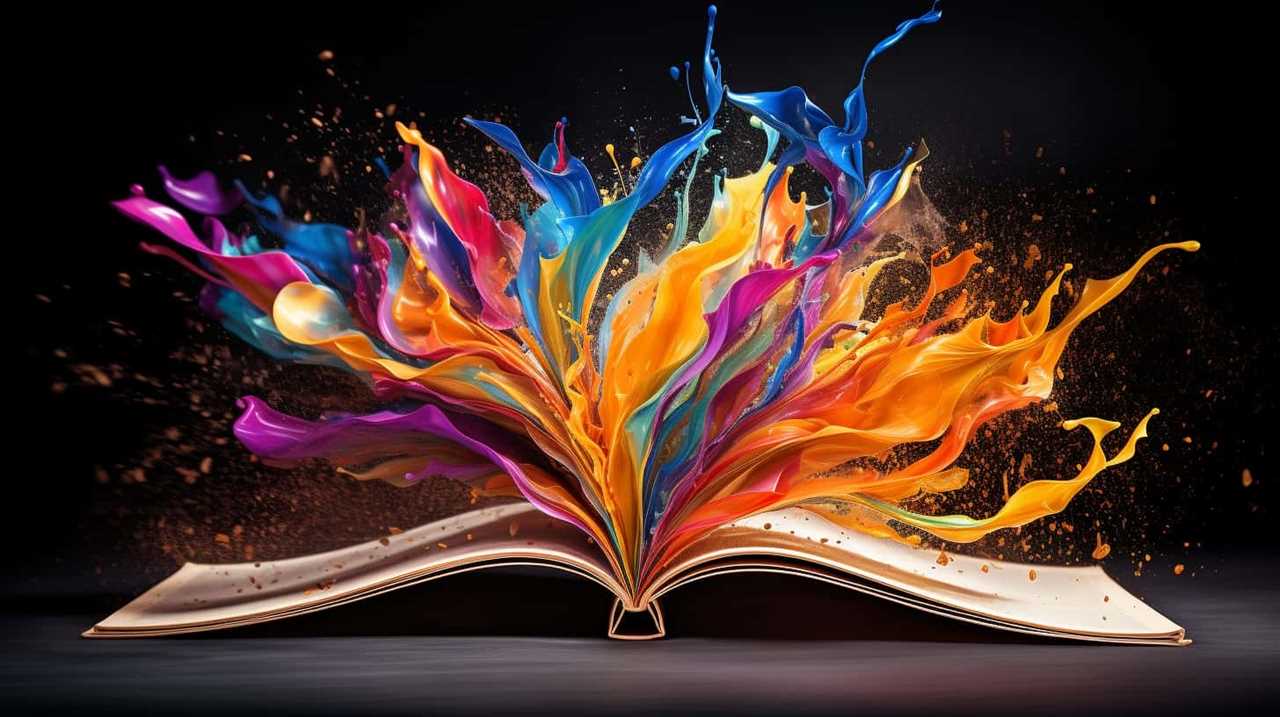
When you immerse yourself in the process of creating art, whether it’s painting, drawing, writing, or playing an instrument, you enter a state of flow. This state of flow allows you to focus your mind on the present moment, letting go of worries and distractions. As you pour your emotions onto the canvas or page, you release tension and promote relaxation. Artistic expression acts as a form of meditation, soothing your mind and nurturing your soul.
Moreover, art gives you a sense of control. In a world that often feels overwhelming, creating something beautiful gives you a sense of agency. You have the power to transform your emotions and experiences into something tangible and meaningful. This act of transformation can be incredibly empowering, helping you regain a sense of balance and inner peace.
Fosters Self-Expression and Identity
When delving into artistic expression, you discover a powerful means of fostering self-expression and shaping your identity. Art provides a platform for you to express your innermost thoughts and emotions, allowing you to communicate in ways words cannot. Through art, you can explore different aspects of your identity and gain a deeper understanding of yourself.
Here are three ways in which artistic expression fosters self-expression and identity:
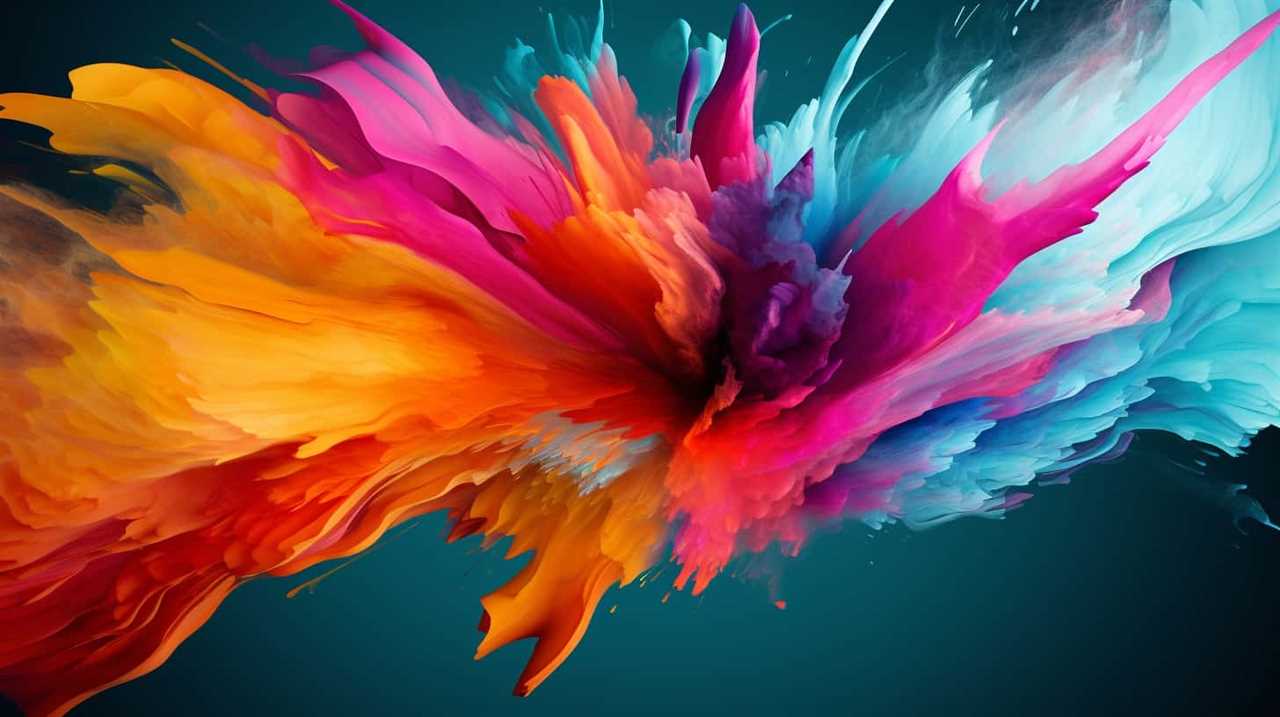
- Boosts self-esteem: Creating art allows you to celebrate your unique perspective and talents. When you express yourself through art, you gain a sense of accomplishment and pride, which boosts your self-esteem and confidence.
- Forms artistic identity: Artistic expression helps you discover your own artistic style and voice. As you experiment with different techniques and mediums, you develop a distinct artistic identity that sets you apart from others, making your work truly unique.
- Empowers you: Artistic expression empowers you to share your stories, experiences, and perspectives with the world. Through art, you can challenge societal norms, break boundaries, and inspire change. This empowerment allows you to shape not only your own identity but also the world around you.
Enhances Emotional Intelligence
As you explore the ways artistic expression enhances your emotional intelligence, you’ll discover the profound connection between art and empathy. Through art, you can develop a deeper understanding of others’ emotions and experiences, allowing you to connect with them on a more empathetic level.
Additionally, engaging in artistic activities can foster self-awareness by providing a safe space for introspection and self-expression.
Art and Empathy
By immersing yourself in art, your emotional intelligence is enhanced through developing a deeper sense of empathy. Art has the power to connect people on a social level, allowing us to understand and relate to the experiences of others.
Here are three ways in which art can enhance your emotional intelligence:

- Perspective Taking: Engaging with art encourages you to see the world from different perspectives, promoting empathy and understanding towards diverse experiences and emotions.
- Emotion Regulation: Art provides a safe space to explore and express your own emotions, helping you develop self-awareness and regulate your emotions effectively.
- Non-Verbal Communication: Artistic expression often communicates emotions and experiences that words can’t capture. By engaging with art, you learn to interpret and understand non-verbal cues, enhancing your emotional intelligence in interpersonal relationships.
Through art, you can cultivate a deeper understanding of others, develop emotional insight, and strengthen your connections with those around you. Explore the transformative power of art and unlock your potential for empathy and emotional intelligence.
Self-Awareness Through Art
To enhance your emotional intelligence, cultivate self-awareness through art.
Artistic expression provides a unique avenue for self-expression exploration and artistic self-discovery. Through the process of creating art, you have the opportunity to delve deep into your emotions, thoughts, and experiences, gaining a better understanding of yourself and your inner world.
Art allows you to express your authentic self without judgment or restrictions, enabling you to tap into your subconscious and uncover hidden aspects of your being. As you engage in the artistic process, you’ll uncover new insights, perspectives, and emotions that may have been previously unknown to you.

This self-awareness gained through art can greatly enhance your emotional intelligence, empowering you to understand, manage, and express your emotions in a more authentic and healthy way.
Improves Cognitive Function
Are you looking to boost your cognitive function? Engaging in artistic expression can be a powerful tool for improving your brain’s abilities.
When you create art, you activate multiple regions of your brain, including those responsible for memory.
Additionally, the creative problem-solving skills required in art can enhance your critical thinking and problem-solving abilities in other areas of life.
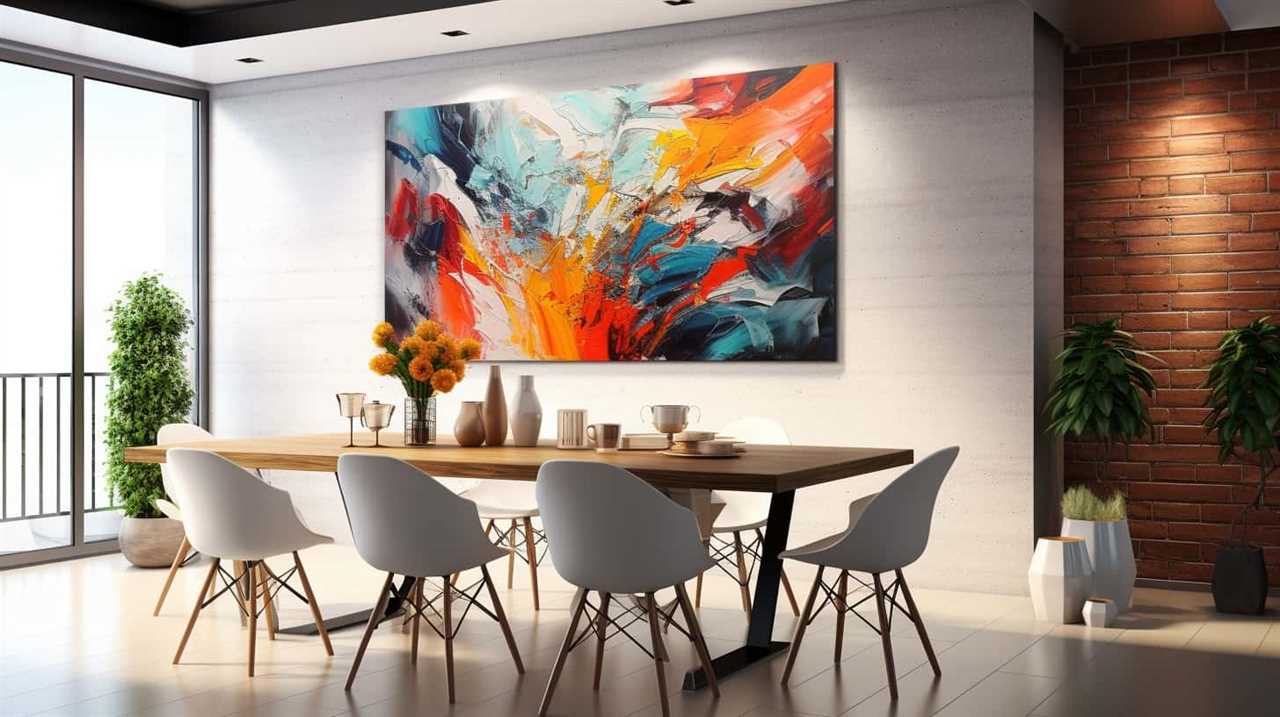
Lastly, engaging in artistic expression can promote stronger brain connectivity, allowing for better communication between different regions of your brain.
Art and Memory
You can improve your cognitive function through art, enhancing your memory and mental abilities. Engaging in artistic expression has been shown to have a positive impact on memory and overall cognitive function.
Here are three ways art can benefit your memory:
- Art and Memory: Creating art stimulates different areas of your brain, including those responsible for memory. By engaging in art, you can strengthen your neural connections and improve your ability to retain information.
- Art Therapy and Memory: Art therapy utilizes the creative process to explore emotions and memories. Through art therapy, you can tap into your subconscious and unlock memories that may have been buried. This can lead to a deeper understanding of yourself and enhance your memory recall.
- Mindful Art Practices: Engaging in mindful art practices, such as drawing or painting, can improve your focus and concentration. This increased attentiveness can enhance your memory and cognitive abilities.
By incorporating art into your life, you can boost your memory and enhance your cognitive function.

Now, let’s explore how art can also contribute to creative problem-solving.
Creative Problem-Solving
Engaging in artistic expression can greatly enhance your cognitive function by improving creative problem-solving skills. By allowing yourself to engage in creative exploration, you open up new possibilities for finding innovative solutions to challenges. Artistic expression encourages you to think outside the box and approach problems from different angles, fostering a mindset of curiosity and open-mindedness. It stimulates your brain to make new connections, improving your ability to think critically and find unique solutions. To illustrate the impact of artistic expression on cognitive function, consider the following table:
| Traditional Problem-Solving | Creative Problem-Solving |
|---|---|
| Linear thinking | Outside the box thinking |
| Limited solutions | Infinite possibilities |
| Fixed mindset | Growth mindset |
| Conventional methods | Innovative approaches |
As you can see, engaging in artistic expression can transform your problem-solving abilities by expanding your perspectives and encouraging innovative thinking. So go ahead, embrace your creative side and watch your cognitive function soar!
Enhancing Brain Connectivity
By exploring artistic expression, you can further enhance your cognitive function by improving brain connectivity. Engaging in artistic activities not only promotes brain health but also boosts your cognitive abilities.

Here are three ways artistic expression enhances brain connectivity:
- Enhances Neuroplasticity: Creating art stimulates the brain’s ability to form new connections and reorganize itself. This promotes neuroplasticity, allowing your brain to adapt and grow.
- Strengthens Neural Networks: Artistic expression activates multiple regions of the brain, strengthening the connections between them. This enhances communication and coordination among various brain areas.
- Improves Cognitive Skills: Engaging in artistic activities like painting, playing an instrument, or dancing requires attention, memory, and problem-solving skills. Regular practice of these activities can improve your cognitive abilities, such as attention span, memory recall, and creative thinking.
Promotes Mindfulness and Relaxation
Artistic expression through activities such as painting or sculpting can cultivate a state of mindfulness and relaxation. Engaging in these creative practices allows you to focus your attention on the present moment, bringing your awareness to the strokes of a paintbrush or the shaping of clay. By immersing yourself in the process of creation, you can experience a sense of calm and tranquility.
Mindfulness techniques, such as deep breathing and visualization, can be incorporated into your artistic practice to enhance relaxation. As you engage with the materials and immerse yourself in the creative process, you can let go of any worries or stressors that may be weighing you down. The act of creating becomes a form of meditation, allowing you to quiet your mind and find inner peace.
Moreover, artistic expression provides an outlet for self-expression and emotional release. Through art, you can explore and process your thoughts and feelings in a non-judgmental and supportive environment. This therapeutic aspect of artistic expression can help you gain insight into yourself, promote self-discovery, and foster personal growth.

Innovative approaches to artistic expression, such as digital art or mixed media, offer endless possibilities for exploration and experimentation. Embrace your creativity and let it flow freely, allowing yourself to get lost in the process. By engaging in artistic expression, you can tap into a state of mindfulness and relaxation, promoting overall wellbeing and nourishing your soul.
Cultivates Resilience and Coping Skills
Developing resilience and coping skills is a key benefit of incorporating artistic expression into your life. Artistic expression provides a unique outlet for exploring and processing emotions, allowing you to build resilience in the face of challenges and develop effective coping mechanisms. Here are three ways artistic expression can cultivate resilience and enhance your coping skills:
- Emotional exploration: Through art, you can delve into your emotions and express them in a safe and non-judgmental way. This process helps you gain a deeper understanding of your feelings and promotes emotional resilience.
- Self-reflection: Artistic expression encourages self-reflection, allowing you to examine your experiences and thoughts from different perspectives. By engaging in this introspective practice, you can develop a greater sense of self-awareness and learn valuable coping strategies.
- Creative problem-solving: Artistic expression nurtures your creativity, enhancing your ability to think outside the box and find innovative solutions to challenges. This creative problem-solving mindset can be applied to various aspects of life, empowering you to adapt and overcome obstacles.
Incorporating artistic expression into your life not only provides a means of self-expression but also serves as a powerful tool for resilience building and developing effective coping mechanisms. Embrace the transformative power of art and unlock your potential for growth and self-discovery.
Encourages Self-Reflection and Introspection
Engaging in artistic expression encourages deep self-reflection and introspection, allowing you to gain valuable insights into your thoughts and experiences. Through the process of creating art, you’re able to explore the depths of your emotions, thoughts, and beliefs. This self-reflection enables you to better understand yourself, leading to personal growth and development.

Artistic expression provides a safe space for you to delve into your innermost thoughts and feelings. It allows you to express yourself freely, without judgment or constraint. As you engage in the creative process, you may find that certain patterns, themes, or emotions emerge. These revelations can offer profound insights into your psyche, helping you to uncover hidden aspects of yourself and understand your own desires, fears, and motivations.
Moreover, self-reflection and introspection through artistic expression can lead to personal growth and development. By gaining a deeper understanding of yourself, you can identify areas for improvement and work towards becoming the best version of yourself. Artistic expression can also help you develop empathy and compassion, as you explore different perspectives and emotions through your artwork.
As you reflect on your artistic creations and the insights they provide, you may begin to see how they relate to your interactions with others. This realization can transition us into the subsequent section, where we’ll explore how artistic expression strengthens communication and connection.
Strengthens Communication and Connection
Through artistic expression, you can foster stronger connections and enhance communication. Art has the power to transcend language barriers and connect people on a deeper level. Here’s how it can strengthen your communication skills and build relationships:
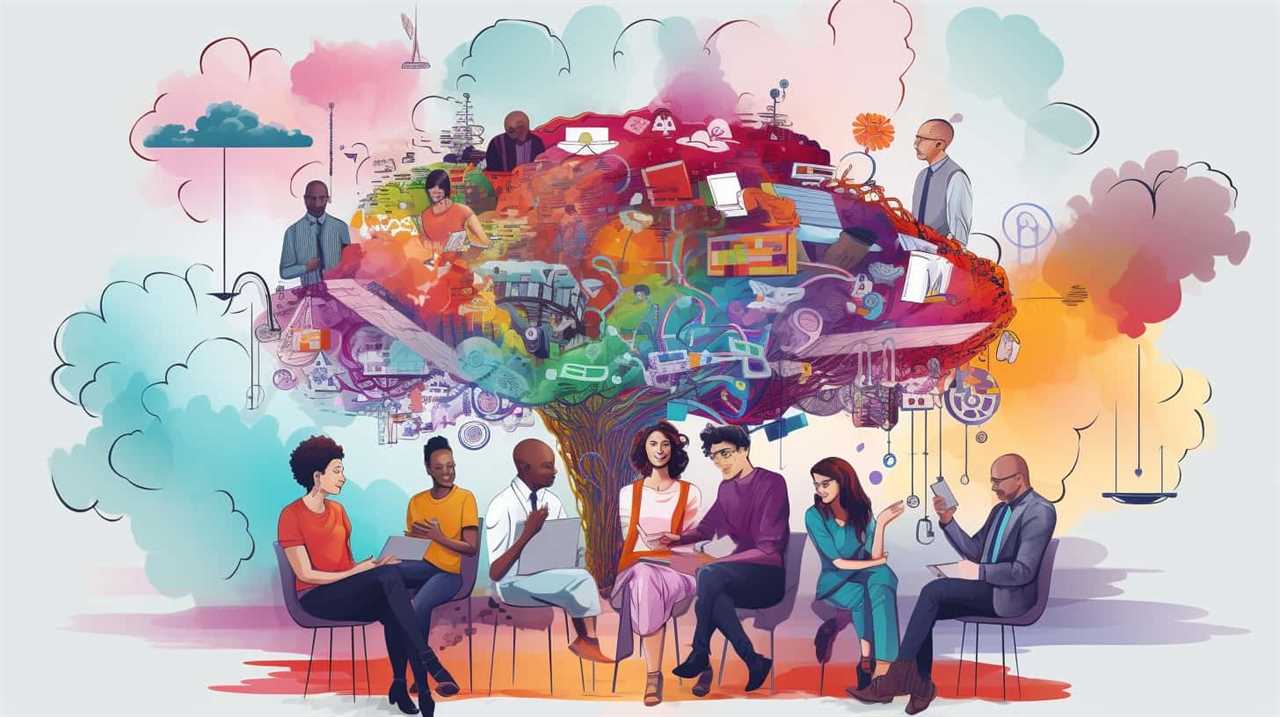
- Expressing emotions: Art allows you to communicate your thoughts and feelings in a non-verbal way. It provides a safe space to express emotions that may be difficult to put into words, fostering empathy and understanding in relationships.
- Active listening: Engaging with different forms of art encourages active listening and observation. This skill translates into better communication with others, as you learn to pay attention to subtle cues and nuances in both verbal and non-verbal communication.
- Promoting dialogue: Artistic expression sparks conversations and encourages dialogue. Whether it’s discussing a painting, sharing poetry, or collaborating on a project, art provides a common ground for people to connect, share ideas, and build meaningful relationships.
Sparks Creativity and Innovation
Are you feeling stuck in a creative rut?
Artistic expression has the power to ignite your imagination and inspire fresh ideas.
By engaging in creative activities, you can foster original thinking and tap into your innovative potential.
This newfound creativity can also drive inventive problem-solving, allowing you to find unique solutions to challenges you may face.

Inspires Fresh Ideas
Discover how artistic expression ignites your imagination, sparking a wealth of fresh ideas and fueling the fires of creativity and innovation. Art has the power to inspire you, opening your mind to new possibilities and fresh perspectives.
When you engage in artistic activities, whether it’s painting, writing, or dancing, you tap into a wellspring of creativity that can flow into all areas of your life. Here’s how artistic inspiration can enhance your innovative thinking:
- Broadens your horizons: Exploring different art forms exposes you to diverse perspectives and cultures, expanding your worldview and encouraging you to think outside the box.
- Encourages experimentation: Artistic expression invites you to take risks and try new approaches. By embracing experimentation, you cultivate a mindset of innovation and adaptability.
- Connects seemingly unrelated ideas: Art helps you make unexpected connections between seemingly unrelated concepts, sparking innovative ideas and solutions.
Embrace the power of artistic expression and watch as your imagination flourishes, leading you to exciting and groundbreaking ideas.
Fosters Original Thinking
Embrace the power of artistic expression to foster original thinking, igniting your creativity and fueling innovation. When you engage in artistic activities, you tap into a wellspring of inspiration that allows you to think outside the box and explore new possibilities. Artistic expression encourages you to break free from conventional norms and embrace your unique perspective. It challenges you to question the status quo, pushing the boundaries of what is considered possible. By nurturing your creative spirit, you develop a keen sense of originality, allowing you to approach problems with fresh eyes and find innovative solutions. To help you grasp the transformative power of artistic expression, consider the following table:

| Artistic Expression | Originality | Critical Thinking |
|---|---|---|
| Painting | Sparks | Encourages |
| Writing | Cultivates | Stimulates |
| Sculpting | Inspires | Enhances |
As you can see, engaging in artistic expression not only sparks originality but also stimulates critical thinking. It encourages you to think deeply, analyze, and evaluate ideas from different perspectives. By embracing artistic expression, you open yourself up to a world of possibilities and unlock your full potential for innovation. So, go ahead and let your creativity flow, and watch as your original thoughts take flight.
Drives Inventive Problem-Solving
Tap into the power of artistic expression to drive inventive problem-solving, sparking creativity and innovation within yourself.
Artistic activities can serve as a catalyst for unlocking your creative thinking and expanding your problem-solving skills. Here’s how engaging in artistic expression can enhance your ability to find innovative solutions:
- Encourages unconventional thinking: By exploring different mediums and techniques, you train your brain to think outside the box, enabling you to approach problems from unique angles.
- Promotes open-mindedness: Artistic expression encourages you to embrace ambiguity and uncertainty, fostering a mindset that welcomes new ideas and perspectives.
- Enhances adaptability: Artistic endeavors require experimentation and adaptation, helping you develop the flexibility needed to tackle complex challenges in innovative ways.
By incorporating artistic expression into your problem-solving process, you can tap into your innate creativity and discover fresh approaches to tackle even the most daunting problems.

Empowers Personal Growth and Development
Developing artistic skills can empower you to cultivate personal growth and enhance your overall development. Artistic expression allows you to tap into your inner creativity and explore new possibilities. It provides a platform for self-expression, allowing you to communicate your thoughts, emotions, and experiences in a unique and meaningful way.
Artistic growth is not just about mastering techniques and creating visually pleasing pieces. It is a journey of self-discovery and personal empowerment. Through art, you can transcend limitations and push boundaries, both within yourself and in the world around you. It encourages you to step outside of your comfort zone, take risks, and embrace new challenges.
To further emphasize the transformative power of artistic expression, consider the following table:
| Empowers Personal Growth and Development |
|---|
| 1. Fosters self-reflection and introspection |
| 2. Encourages experimentation and innovation |
| 3. Promotes resilience and adaptability |
By engaging in artistic activities, you are given the opportunity to reflect on your own experiences and emotions. This self-reflection can lead to a deeper understanding of yourself and your place in the world. Additionally, art encourages experimentation and innovation, allowing you to think outside the box and develop new perspectives. Lastly, art teaches resilience and adaptability, as you learn to navigate challenges and adapt to new circumstances.
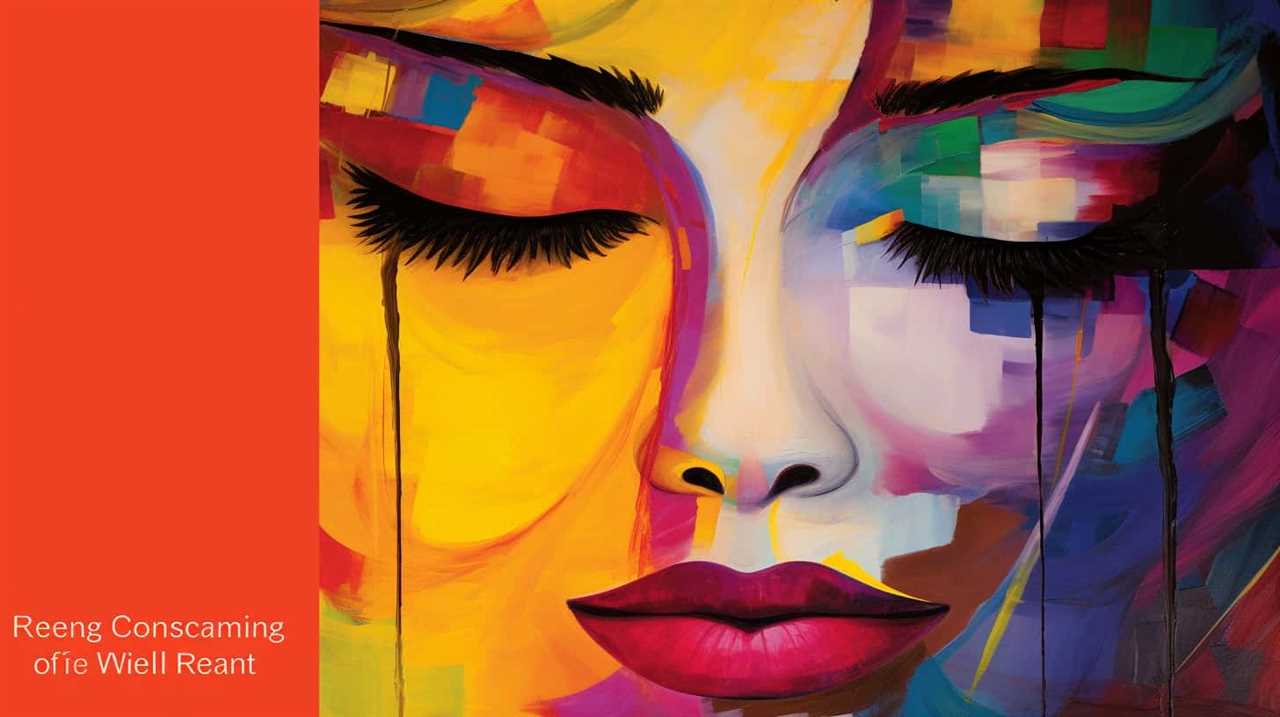
Provides a Sense of Purpose and Fulfillment
Engaging in artistic expression can provide you with a sense of purpose and fulfillment. When you immerse yourself in creating art, whether it’s painting, writing, or dancing, you tap into your innermost desires, passions, and dreams. It becomes a way to express yourself authentically and connect with something greater than yourself.
Here’s how artistic expression can bring a deep sense of purpose and personal fulfillment into your life:
- Self-Discovery: Artistic expression allows you to explore your inner world, uncovering hidden emotions, desires, and beliefs. It provides a safe space for self-reflection and self-expression, helping you understand who you truly are and what truly matters to you.
- Meaning-Making: Creating art gives you the opportunity to give meaning to your experiences and make sense of the world around you. Through the process of creating, you can find purpose in the mundane and beauty in the chaos, allowing you to feel a profound sense of fulfillment.
- Connection and Impact: When you share your art with others, it has the power to touch hearts, inspire change, and create connections. By connecting with others through your art, you can experience a sense of purpose by knowing that your work has the ability to make a difference in someone else’s life.
Engaging in artistic expression not only provides you with a sense of purpose and personal fulfillment but also expands your perspective and empathy.
Expands Perspective and Empathy
You can gain a broader perspective and cultivate empathy through artistic expression. Engaging in various art forms allows you to explore different cultures, traditions, and ways of life, expanding your cultural understanding. Through painting, sculpture, music, dance, or any other form of artistic expression, you can immerse yourself in the stories, experiences, and emotions of others. This immersion enables you to see the world through their eyes and gain a deeper understanding of their perspectives.

Artistic expression also promotes social connection and empathy. When you create or appreciate art, you connect with others who share similar interests and passions. This shared experience fosters a sense of belonging and community, allowing you to connect with people from diverse backgrounds. By engaging with art, you develop the ability to empathize with others, understanding their struggles, joys, and triumphs.
Art provides a safe space where you can explore and express your own emotions, thoughts, and experiences. It encourages you to step outside of your comfort zone and challenge your preconceived notions. This process of self-reflection and exploration expands your perspective and helps you develop a more empathetic mindset.
Through artistic expression, you can break down barriers, bridge gaps, and foster a more inclusive and compassionate society. So, embrace the power of art to expand your understanding, promote social connection, and cultivate empathy.
Facilitates Problem-Solving and Decision-Making
By delving into artistic expression, you can effectively navigate challenges, make sound decisions, and find innovative solutions to problems. Artistic expression facilitates critical thinking and enhances decision-making, offering a unique perspective that can lead to breakthrough solutions.
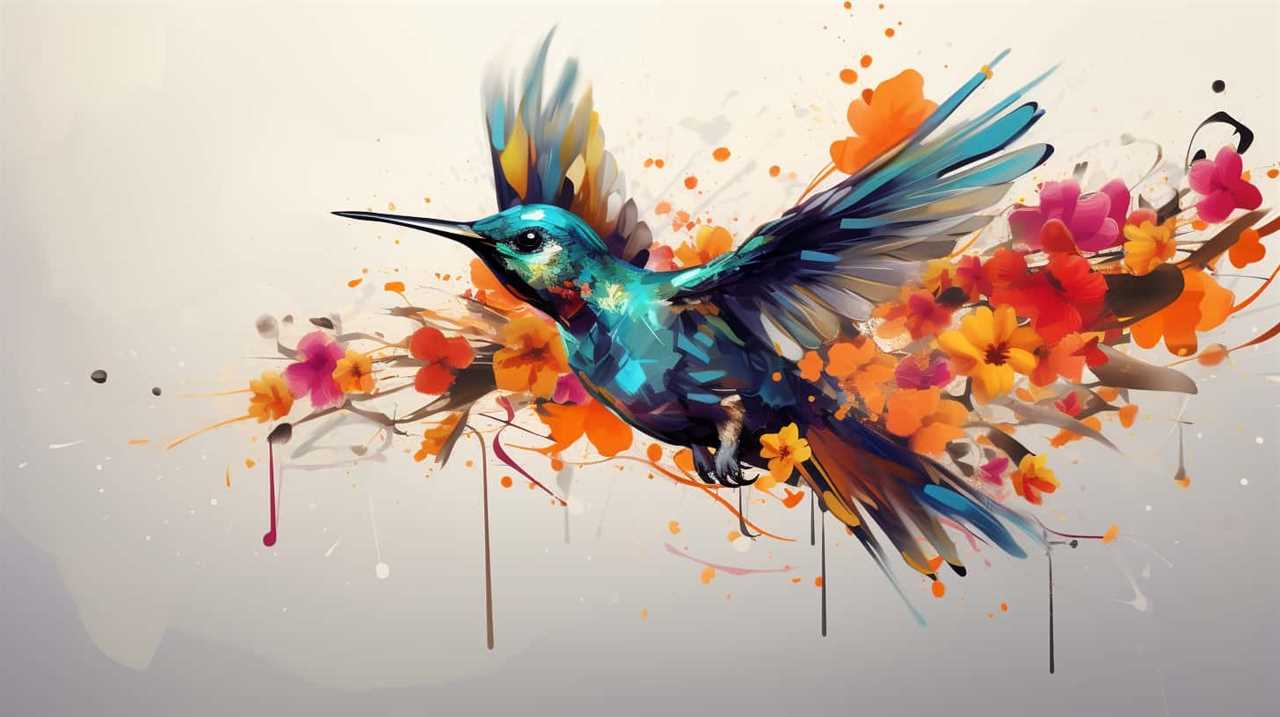
Here’s how artistic expression can help you in problem-solving and decision-making:
- Encourages out-of-the-box thinking: Engaging in artistic expression encourages you to think beyond conventional boundaries. It allows you to explore alternative perspectives and unconventional approaches, fostering innovation and creativity.
- Promotes self-reflection: Artistic expression provides a safe space for self-reflection and introspection. Through various art forms, you can gain a deeper understanding of your thoughts, emotions, and values. This self-awareness can help you make decisions that align with your authentic self.
- Enhances problem-solving skills: Artistic expression requires problem-solving skills, such as identifying patterns, finding connections, and seeking solutions. By practicing these skills in a creative context, you can transfer them to real-life situations, improving your ability to tackle complex problems effectively.
By engaging in artistic expression, you’ll not only enhance your problem-solving and decision-making abilities, but you’ll also promote overall well-being and life satisfaction.
Now, let’s explore how artistic expression can contribute to your overall well-being and fulfillment.
Promotes Overall Well-Being and Life Satisfaction
Are you looking for ways to promote your overall well-being and increase life satisfaction?

Artistic expression can be a powerful tool for achieving these goals. By engaging in art as therapy, you can tap into your creativity and use it as a form of self-expression, enabling you to process emotions and experiences in a healthy way.
Additionally, embracing creative outlets for stress relief can provide a much-needed escape from the demands of everyday life, allowing you to recharge and find joy in the process.
Art as Therapy
Artistic expression through therapy enhances overall well-being and life satisfaction. Art as therapy offers a unique and innovative approach to healing. It allows individuals to tap into their creativity and use art as a tool for self-expression and self-discovery.
Here are three ways art as therapy promotes well-being and life satisfaction:
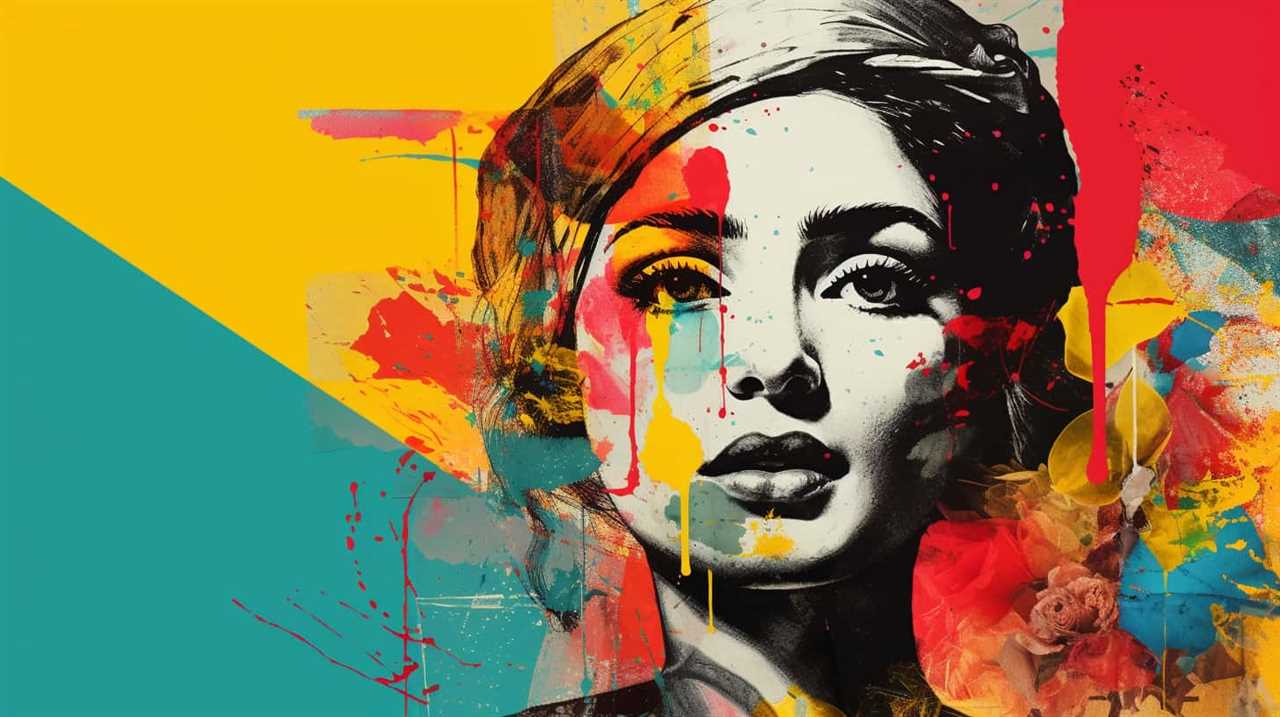
- Emotional release: Engaging in artistic activities provides a safe space for individuals to express their emotions and release pent-up feelings, leading to a sense of relief and emotional healing.
- Self-discovery: Artistic expression allows individuals to explore their inner selves, uncovering hidden strengths, desires, and dreams. Through the process of creating art, individuals can gain a deeper understanding of themselves, fostering personal growth and self-acceptance.
- Empowerment: Art therapy empowers individuals by giving them a sense of control and agency over their own healing process. It allows them to take ownership of their emotions and experiences, leading to increased self-confidence and overall life satisfaction.
By engaging in art as therapy, individuals can experience profound personal growth and find fulfillment in their lives.
Transitioning into the subsequent section about creative outlets for stress, let’s explore how artistic expression can also serve as a powerful tool for stress management.
Creative Outlets for Stress
Explore how engaging in creative outlets can help you manage stress and enhance your overall well-being and life satisfaction.
In today’s fast-paced world, stress seems to be an inevitable part of our lives. However, finding healthy ways to cope with stress is crucial for our mental and emotional well-being.

That’s where artistic hobbies and art therapy techniques come into play. Engaging in creative outlets such as painting, writing, or playing a musical instrument can provide a much-needed escape from the pressures of everyday life. These artistic activities allow you to express yourself freely, release pent-up emotions, and find solace in the present moment.
By immersing yourself in the creative process, you can experience a sense of flow and mindfulness, which can help reduce stress levels and promote overall life satisfaction.
So, why not pick up that paintbrush or dust off that guitar? Engaging in artistic hobbies can be a transformative experience that enhances your well-being and brings joy into your life.
As we delve deeper into enhancing emotional self-care, you’ll discover even more ways to nurture your inner artist and find peace in creativity.
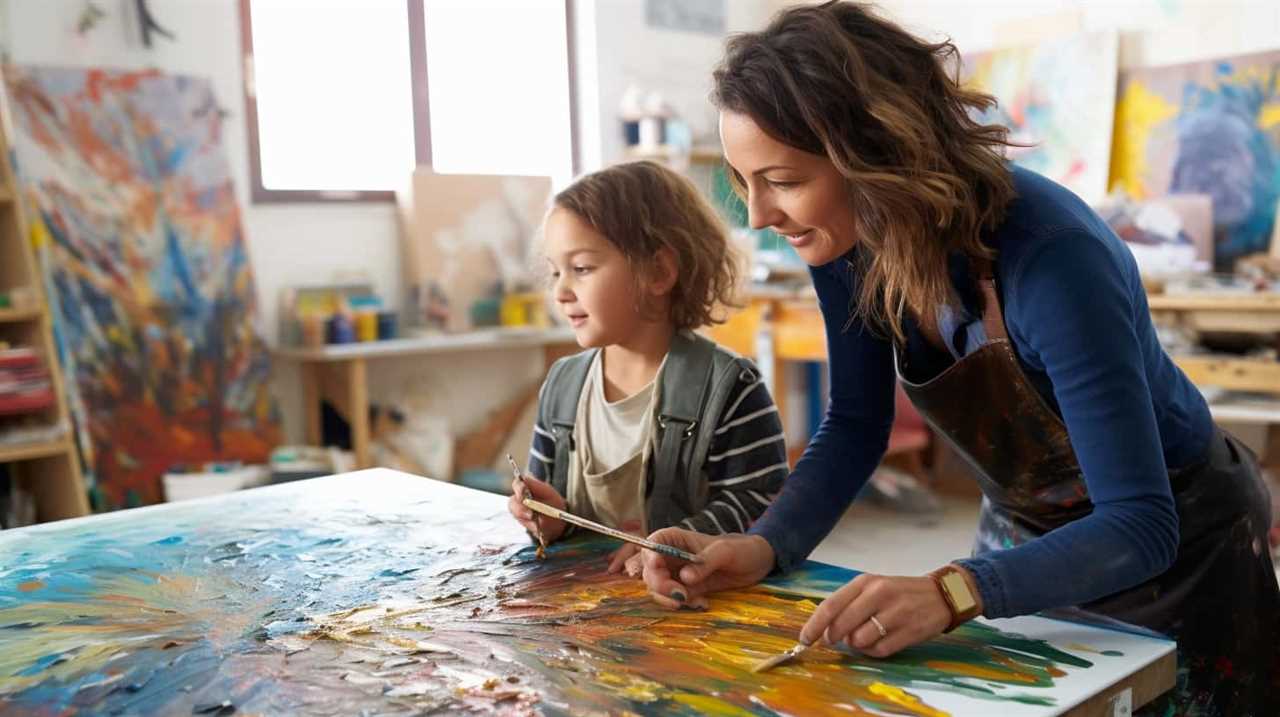
Enhancing Emotional Self-Care
Engaging in artistic expression can promote your overall well-being and life satisfaction by enhancing emotional self-care. Creative expression allows you to tap into your emotions, providing a powerful outlet for self-expression and emotional healing.
Here are three ways artistic expression can enhance your emotional self-care:
- Self-Reflection: Through creative activities like painting, writing, or dancing, you can explore and process your emotions in a safe and non-judgmental space. This self-reflection helps you gain insights into your feelings and allows for personal growth.
- Stress Reduction: Artistic expression acts as a form of release, allowing you to channel your emotions and release any pent-up stress or tension. It provides a healthy outlet to express and manage your emotions, leading to a sense of calm and relaxation.
- Empowerment: Engaging in creative activities empowers you to take control of your emotions. It allows you to transform negative emotions into something positive and meaningful, fostering a sense of empowerment and resilience.
Frequently Asked Questions
How Does Artistic Expression Enhance Emotional Intelligence?
Artistic expression enhances emotional intelligence by serving as a form of therapy. Through creative outlets, you can explore and express emotions, gaining self-awareness and a deeper understanding of your feelings. It’s a therapeutic journey that promotes wellbeing.
Can Artistic Expression Help in Improving Cognitive Function?
Artistic expression can indeed improve cognitive function. Engaging in creative activities stimulates your brain, improving memory and enhancing focus. Through art, you can explore new perspectives, challenge your thinking, and cultivate innovative ideas. Let your creativity flourish!

How Does Artistic Expression Promote Mindfulness and Relaxation?
Art therapy and engaging in creative hobbies can promote mindfulness and relaxation. It allows you to focus on the present moment, reducing stress and anxiety. So, grab that paintbrush or pen and let your imagination flow.
In What Ways Does Artistic Expression Strengthen Communication and Connection?
Artistic collaboration and art therapy allow you to strengthen communication and connection in innovative ways. By engaging in artistic expression, you can explore your emotions, connect with others, and foster a deeper sense of understanding and empathy.
How Does Artistic Expression Facilitate Problem-Solving and Decision-Making?
Artistic problem solving allows you to think outside the box, tap into your creativity, and explore new perspectives. Through art, you can unlock innovative solutions and make decisions that are deeply connected to your emotions and intuition.
Conclusion
Congratulations! You’ve just unlocked the magical doorway to a world where artistic expression becomes your ally in the quest for wellbeing.
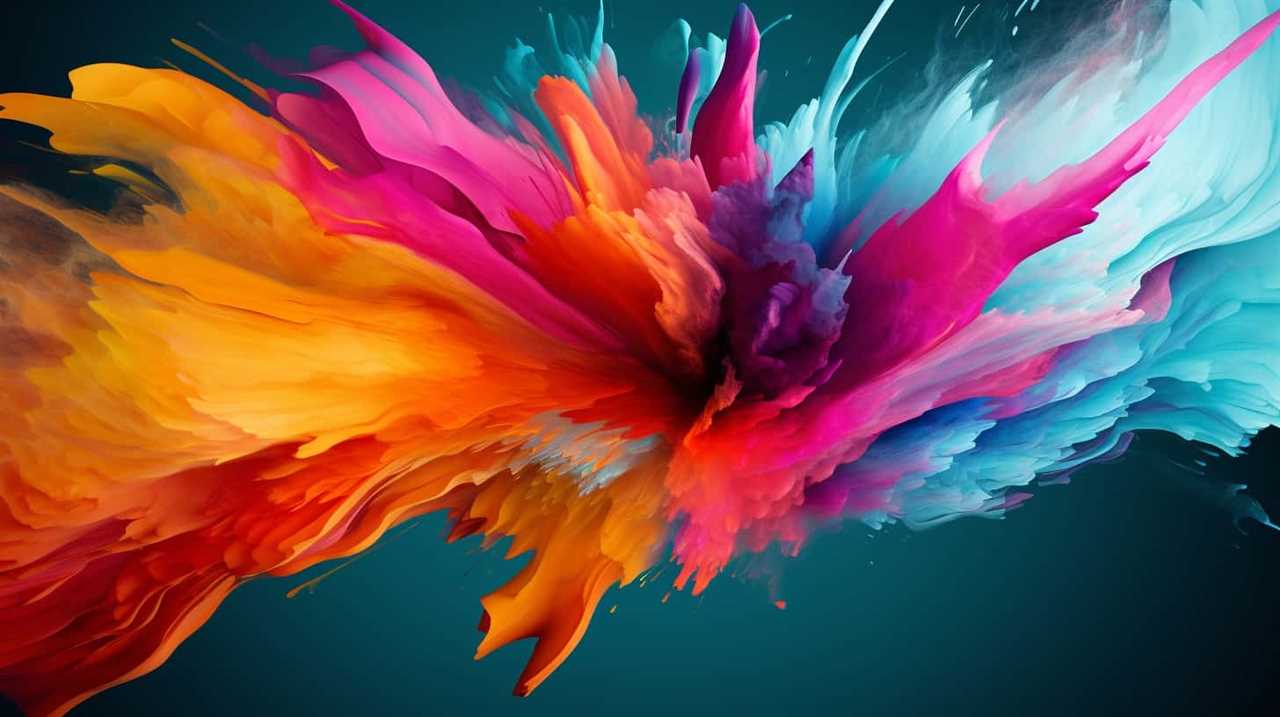
Embrace the brush strokes of happiness, the harmonious melodies of serenity, and the vibrant colors of self-discovery.
Let artistic expression be the gentle breeze that soothes your soul and the beacon of light that guides you towards fulfillment.
Embrace the power of creativity, for it holds the key to unlocking your true potential and living a life of joy and contentment.
So go forth, dear reader, and paint your world with the hues of happiness!

Fritz is a writer whose humor and wit infuse life into words. His creativity, combined with a profound love for the English language, makes him a unique voice at afterQuotes. Fritz’s engagement with books, culture, and social media adds depth to his contributions, making them resonate with our diverse audience.

